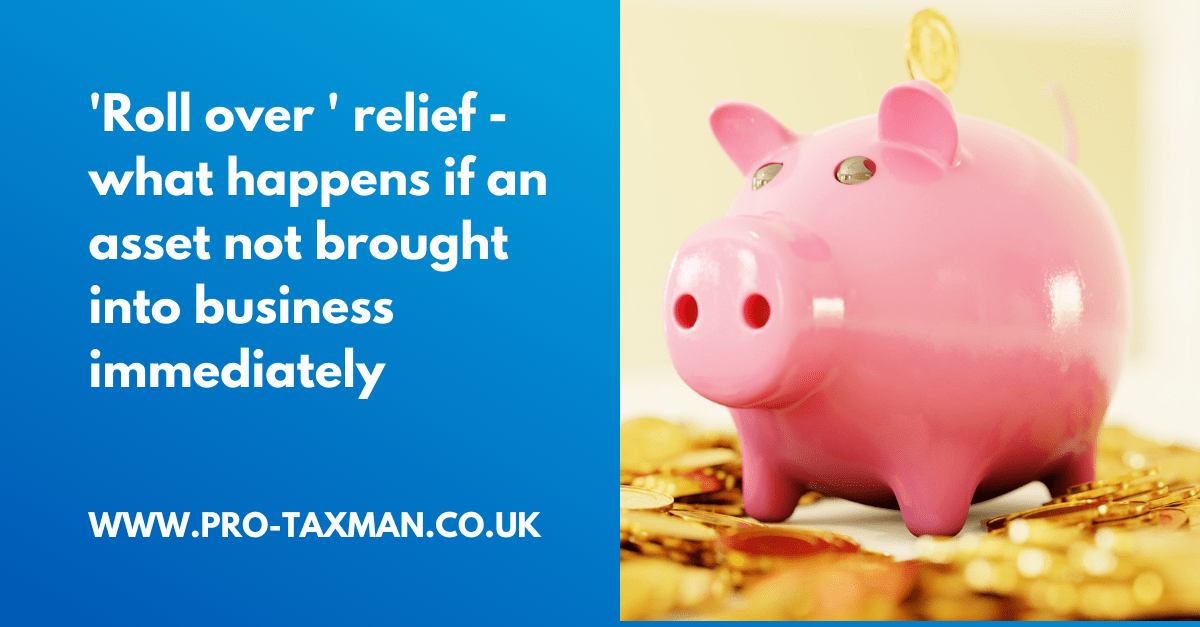There is usually a capital gains tax (CGT) charge when a chargeable asset is sold at a gain (subject to the individual personal allowance for an individual). However deferment of the gain may be possible should ‘rollover relief’ be available.
‘Rollover’ relief can be claimed where trading assets are sold and new assets purchased within a set timeframe using the proceeds (or the equivalent amount of proceeds if the asset is given away). The relief can be claimed by both individuals and companies and allows CGT to be deferred on the sale of a business asset when replacing it with another business asset within a period commencing one year before and ending three years after disposal.
Under this relief the allowable cost of acquisition and any other expenditure of the new asset is reduced by the amount of gain on the old asset. Therefore when the new asset is eventually sold two sets of capital gains will come into charge.
Relief can be claimed where the business is:
- trading, which includes carrying on a business of Furnished Holiday Let;
- occupying and managing commercial woodlands to make a profit;
- carrying on a profession, vocation, office or employment;
- making a personally owned asset available to a personal company; and
- disposing of land by a compulsory purchase.
The assets do not have to be of the same type but must be used, and only used, for the trade.
There is no requirement to invest the actual sale proceeds into the asset purchased so long as an amount equal to the disposal proceeds is used. However, if only part of the sale proceeds is used, the unused part is chargeable immediately (although Business Asset Disposal Relief may be available subject to the relevant conditions).
Provisional claims
HMRC may allow provisional relief where the original asset has been sold and the trader plans to reinvest the proceeds in a new asset but has not yet done so. When the reinvestment finally takes place the actual claim replaces the provisional claim. However, should the reinvestment not take place within three years from 31 January following the tax year of disposal the provisional relief will be cancelled (i.e. provisional relief will automatically cease after 31 January 2027 for a disposal in 2022/23).
Asset not used in business
If the asset is acquired but not taken into the business within the timescale, a claim may still be possible providing:
- the expenditure is incurred for the purpose to enhance the asset’s value
- any work arising from such expenditure begins as soon as possible after acquisition and is completed within a reasonable time.
- on completion of the work the asset is taken into use in the trade and no other purpose
- the asset is not let or used for any non-trading purpose in the period between acquisition and the time it is taken into the trade
Should the original asset only be used in the business for part of the time of ownership the acquisition and proceeds are apportioned into business and non-business use on a timeline basis. Therefore only the part relating to the time used in the business can qualify for relief. For these purposes the period of ownership excludes any period pre 31 March 1982.
Time scale
The time limit for a claim is four years from the end of the accounting period to which the claim is related for companies and from the end of the tax year for individuals.
‘Rollover’ relief is not available where replacement assets are acquired to make a profit on sale. A similar relief, known as ‘holdover relief’, is available where the replacement asset is a depreciating asset.
Need professional accounting service or accounting advice? Contact us to book a 15-min Free Consultation with us today.
To find out more please follow us on Facebook, Twitter, or LinkedIn. Feel free to contact us on 0333 006 4847 or request a call back by texting 075 6464 7474

